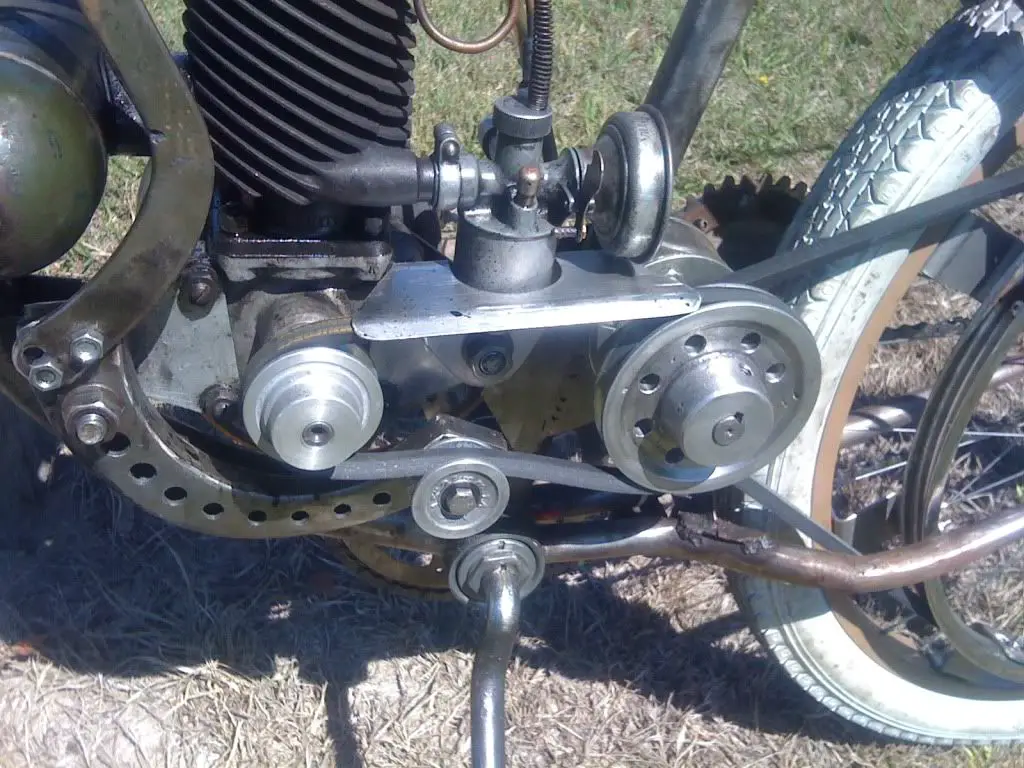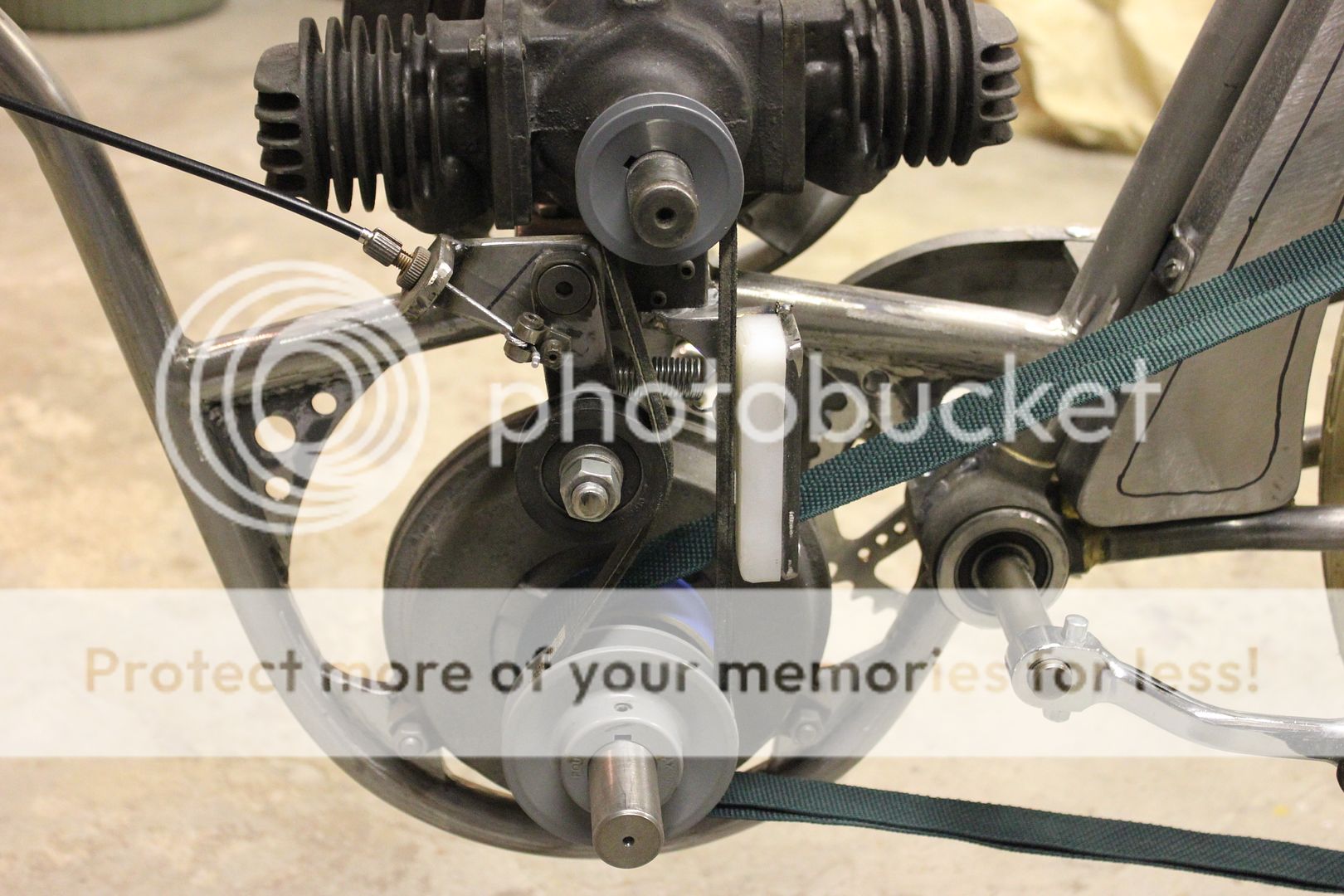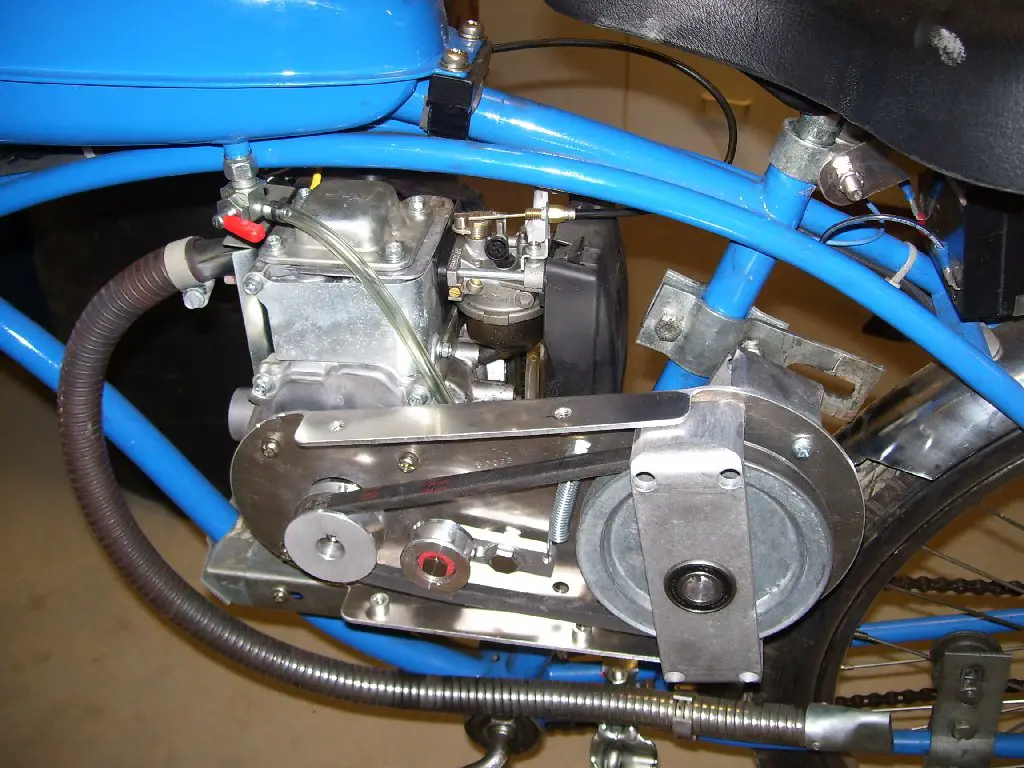I read that some vee-belt types are not to be used on the outside of the belt. I have to check where I saw that. I think it was when searching about how small a pulley diameter you could use and types of vee-belts that have those indents. Also grooves that are along the length of vee-belts, was some other design that maybe was to allow tighter radius. The groove was not for a special pulley, just the normal A-section type. An online calculator took into account horse power and rotational speed was applied and other factors that determined how small a pulley could be used, which was sort of fascinating.
On the other hand I saw a pulley on a washing machine motor that had about 4 grooves in it going around, but this was probably for more surface area and probably had a belt that the grooves were not to make it fit small diameter pulley, but rather get better friction on a small belt. I never saw the belt as it was in the dumpster.
Those types of pulleys that you use that are for the A-section belt on the outside that I see in both pictures, where do you get them? Is there an assembly that is with that actually already made as an idler pulley assembly that I could buy?
I know if I were to use the inside of the vee-belt then the pulley would be no different than the ones on the jack shafts. I have an extra 5/8 inch jack shaft, pillow bearings, bushings, and vee-belt 2 inch pulley, but I think it would be very bulky and maybe over kill to use all that just for an idler pulley.
Any information on this greatly appreciated!
Note, I am using a centrifugal clutch, but I got cornered into not being able to move my engine on its mounting plate to tension the belt from centrifugal clutch to my first jackshaft pulley. My change to a carburetor that got the spacing required interferes with now moving the engine. I tried using these link type belts that I got from Harbor Freight call Accu-Link, and they allowed me to adjust about ½ inch longer or shorter increments.
When I popped the belt on the pulley after getting what I felt the right tension, it still slipped. Also using the same Accu-Link belt I have going from a jack shaft pulley to the rear wheel pulley, it also slipped.
I found I had better friction using a regular vee-belt. They do not seem to stretch anywhere as much.
Here is what happened when I got an adjustable diameter pulley and took too much of a jump in tensioning it up. When I rolled the rear wheel pulley and was popping it on I cracked the pulley. It was just a washing machine pulley from the dumpster, but this is what I used 40 years ago without then cracking. I did though realize that the material before was more shiny and it probably was then made of steel and not cast white metal which is much weaker.
I have since replaced it with a spare and am making what would equate to a tool to use in conjunction with the rear drop outs. Then I can pop the belt on the pulley with a lot of slack, then it pulls the axle back on both sides fully in the drop out and you tighten up the bolts on the axle. Removing the tool afterward it should not crack the pulley but it will give enough tension that the belt will not slip.
Since I learned a lesson that the stretching of some belts are much greater than others, I cannot afford to crack another of these pulleys. That is why for my belt from centrifugal clutch to first pulley, I have to make an idler. It could be used with a spring and also a slotted adjustment for tension, or maybe without the spring if I can use some kind of tool to tension and lock the idler pulley in place.
I already made a cover that in the picture shows it is half finished, but I can modify that as it has a cover now over the centrifugal clutch as well. Definitively a tight fit though and now I see it would have to go on the outside of the belt. I do need a different type of pulley than the ones I have been using for the inside of the vee-belt for this.
Alternately I might not make an idler pulley at all if it becomes to difficult.
It could be that I move the whole twin jack shaft brackets forward if I remove the carburetor to put 1st belt on and then move it back to tighten belt. Putting carburetor back on, then I go for 3rd belt using adjustable pulley diameter and tool for drop outs I mention.
Thanks ahead of time if you can help!
MT
The belt between the top and bottom pulleys on a twin stacked jack shaft I made adjustable slots as seen in the picture attached. It allows the whole bottom jack shaft to adjust up and down.
Popping on the pulley after setting the tension there works out just fine. I do not have the weaker cast white metal pulleys and have worked out a solution for that belt, one of three in my 40:1 ratio drive.
Art Fish Mobile Motor Bike prior Motor Bike DIY'er build to add side car maybe?
http://motorbicycling.com/showthread.php?t=29678&page=9








